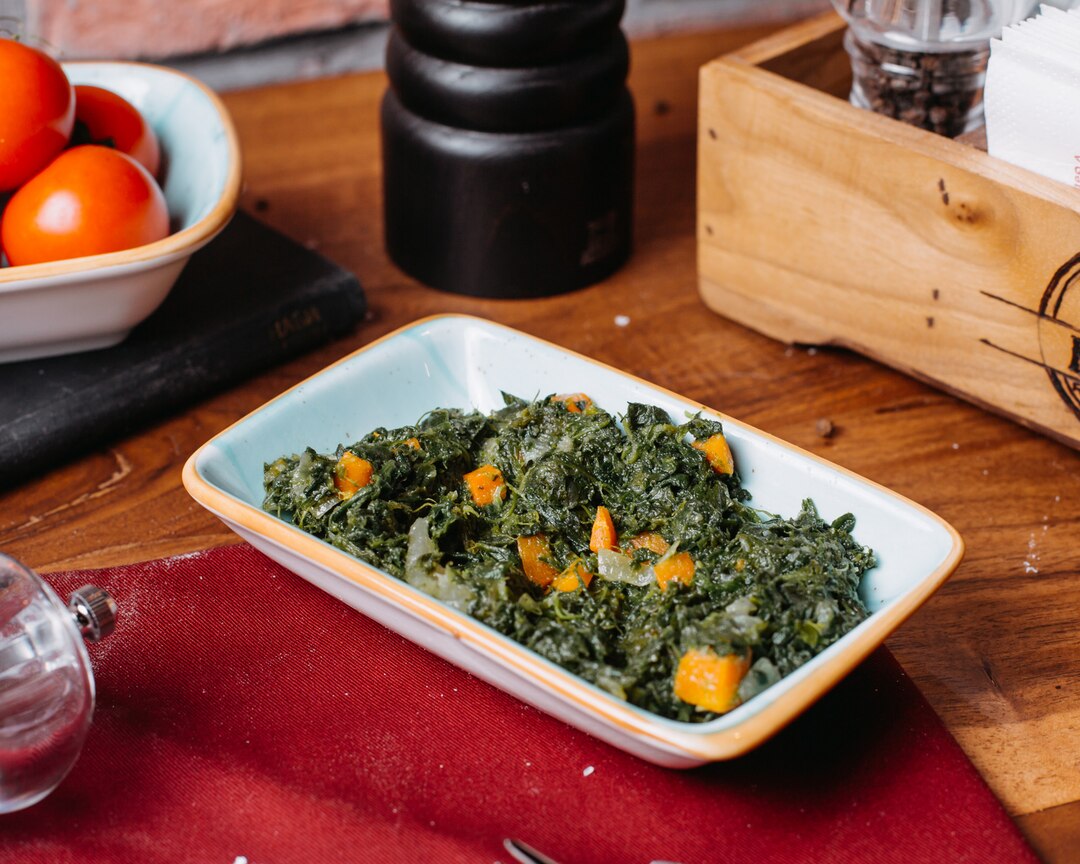Morogo, also known as African wild spinach, is a traditional leafy green vegetable enjoyed in various African countries. It’s rich in nutrients and can be prepared in several delicious ways. Here’s a simple and flavorful recipe for cooking Morogo that you can try at home.
Ingredients
- 500g Morogo (or a mix of African spinach, amaranth, or other leafy greens)
- 1 medium onion, finely chopped
- 2 cloves garlic, minced
- 2 tomatoes, chopped
- 1 teaspoon vegetable oil or sunflower oil
- Salt to taste
- Optional: 1 teaspoon groundnut or peanut butter (for a creamy texture)
Instructions
1. Prepare the Morogo
Start by thoroughly washing the Morogo leaves to remove any dirt or grit. Chop the leaves into smaller pieces for easier cooking.
2. Blanch the Leaves
Bring a large pot of water to a boil. Add the chopped Morogo and blanch for about 3-5 minutes until the leaves are wilted. Drain and set aside.
3. Sauté the Onions and Garlic
In a large frying pan, heat the vegetable oil over medium heat. Add the chopped onions and sauté until they become translucent. Add the minced garlic and cook for another minute, ensuring it doesn’t burn.
4. Add the Tomatoes
Stir in the chopped tomatoes and cook until they start to break down and form a sauce, about 5 minutes.
5. Cook the Morogo
Add the blanched Morogo to the pan and mix well with the onions and tomatoes. Cook for an additional 5-10 minutes, allowing the flavors to meld together.
6. Season and Optional Ingredient
Season the dish with salt to taste. For a richer and creamier texture, you can stir in a teaspoon of groundnut or peanut butter at this stage. Mix thoroughly to combine.
7. Serve
Serve the Morogo hot as a side dish with pap (a traditional African maize porridge), rice, or your preferred starch. It can also be enjoyed on its own for a light, nutritious meal.
Tips and Variations
- Adding Protein: For a more substantial meal, you can add cooked beans or lentils to the Morogo.
- Spices and Herbs: Enhance the flavor by adding spices such as chili flakes, curry powder, or fresh herbs like coriander.
- Coconut Milk: For a different flavor profile, try adding a splash of coconut milk towards the end of cooking.
Nutritional Benefits
Morogo is packed with vitamins A, C, and K, as well as essential minerals like iron and calcium. It’s also high in dietary fiber, making it an excellent addition to a healthy diet.
Cooking Morogo is a wonderful way to enjoy a traditional African vegetable that’s both nutritious and delicious. This simple recipe is easy to follow and allows for various adaptations based on your taste preferences. Give it a try and experience the rich flavors of African cuisine in your own kitchen!








